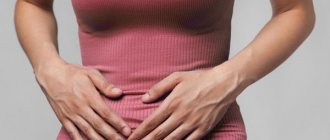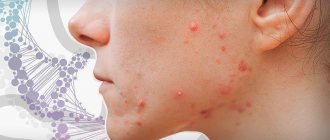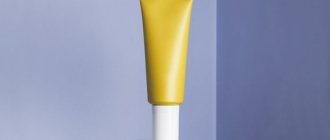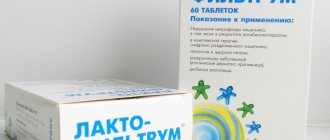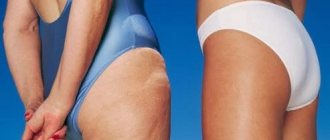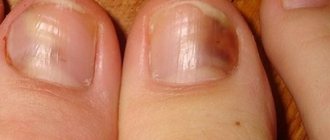In accordance with the work program of the Research Institute of Disinfectology of Rospotrebnadzor and the All-Russian Scientific and Methodological Center for Nonspecific Prevention of Infectious Diseases and Monitoring of the Resistance of Biological Agents to Disinfectants, which operates on its basis, work has been completed to study the sensitivity to insecticides of body lice and head lice.
It has been established that high resistance of lice to pyrethroids has developed on the territory of the Russian Federation - lice resistant to permethrin make up more than 95% of micropopulations collected in the country. None of the permethrin-based pediculicidal agents provides 100% acute action; there is no ovicidal effect.
A study of the sensitivity to insecticides of body and head lice from Moscow, St. Petersburg, Tambov, Kursk, Kazan, Novosibirsk, Khabarovsk, Khanta-Mansiysk and other cities by specialists from the Federal Budgetary Institution Research Institute of Disfectology of Rospotrebnadzor was carried out for 9 years.
The molecular genetic method has shown that lice with mutations that determine a decrease in the sensitivity of the nervous system to the action of pyrethroids are widespread in all local populations of head and body lice in all federal districts of Russia.
Currently, in the Register of State Registration Certificates (unified form of the Customs Union, Russian part), the share of pyrethroid-based products is about 40%.
At the same time, products based on substances with a different mechanism of action than pyrethroids remain effective: benzyl benzoate, organophosphorus compounds (malathion, fenthion), dimethicones, isopropyl myristate, clearol, substances of plant origin (anise, clove oils, neem oil, and some others) (Appendix 1 and 2).
In order to limit and completely eliminate the use of pediculicides based on pyrethroids for the treatment of head, body, and pubic lice, I ask you to use this information when monitoring the circulation of pediculicides, and also when working with the population and the media. Lists of approved pediculicides are presented in Appendices 1-5.
Annex 1
PRODUCTS FOR DESTROYING PYRETHROID-RESISTANT HEAD AND PUBIC LICE
Polydimethylsiloxanes
- pediculicide "HEDRIN" 77.99.1.2.U.4547.6.10 dated 06/29/2010 dimethicone - 4% "Thornton and Ross Ltd.", "Thornton and Ross Ireland Ltd." (Great Britain)
- pediculicidal agent “D-95” of the trademark “911 Your Rescue Service” RU.77.99.88.002.E.002023.04.17 dated 04/27/2017 dimethicone 87.7%; CJSC "TWINS Tech", (Russian Federation)
- pediculicidal agent "Nyuda®" RU.77.99.88.002.E.012895.12.14 dated 12/29/2014 dimethicone 92%, Germany
- pediculicidal agent "Paranit® Sensitive" (Paranit® Sensitive) RU.77.99.88.002.E.004749.06.14 dated 06.20.2014 oxyphthyrin complex, including dimethicone -4% "Cefaro Ireland Limited", (Ireland) and "Megenix Benelux" » (Belgium) «Laboratories Wilson» (France)
- pediculicidal product “Hedrin Once (Hedrin Vance)” in two forms Liquid Gel (liquid gel), Spray Gel (spray gel) RU.77.99.88.002.E.010406.11.15 dated November 26, 2015 dimethicone, 4%, nerolidol, 2% ; "Thornton & Ross Ltd", (UK)
- pediculicidal agent “Full Marks” (“Full Marks”), RU.77.99.88.002.E.000357.01.18 dated 01/26/2018 isopropyl myristate -50%, cyclomethicone 50% “Reckit Benckiser Healthcare” (UK)
- pediculicidal agent “Nitolic” (“Nitolic”), RU.77.99.88.002.E.000462.02.18 dated 02/01/2018 isopropyl myristate -72.5%, “ICB Pharma” (Poland)
- pediculicidal agent - “Clean Life” RU.77.99.88.002.E.005564.07.13 from 07/08/2013 polydimethylsiloxanes, 47%; LLC "NPO "VELT", (Russian Federation)
- pediculicidal product "Duranit anti-pediculosis lotion for hair" RU.77.99.88.002.E.005135.06.13 from 06.28.2013 dimethicone - 6%, cyclopentaxyloxane - 94%, "Drog Ekza Tibbi Malzeme" (Turkey)
- pediculicide "PARADISE ULTRA" RU.77.99.88.002.E.002037.05.18 dated 05/21/2018 dimethicone, 4%, isoparaffins, 96%, Mirrolla LLC, (Russian Federation)
Mineral oils
- pediculicidal agent “Shampoo “Deparazin® Ultra” RU.77.99.88.002.E.000369.01.16 from 01/28/2016 petroleum jelly, 56.5%; BIOPHARMRUS LLC, (Russian Federation)
- pediculicidal product “Shampoo “Pedikulen Ultra” RU.77.99.88.002.E.008118.09.14 from 09.19.2014 petroleum jelly - 55%; BIOPHARMUS LLC, (Russian Federation)
- pediculicidal product Paranit® Shampoo (Paranit® Shampoo) RU.77.99.88.002.E.012487.12.14 dated 12/22/2014 clearol (mineral oil) - 69.25%; Chefaro Ireland Limited, (Ireland) Chefaro Ireland Limited, Ireland (Ireland) and Megenix Benelux (Belgium) Bittner Pharma LLC, (Russian Federation)
- pediculicidal product Paranit® Lotion (“Paranit® Lotion”) RU.77.99.88.002.E.012486.12.14 dated December 22, 2014 isopar (mineral oil) - 96%, dimethicone - 4%, Chefaro Ireland Limited, (Ireland) Chefaro Ireland Limited, Ireland (Ireland) and Megenix Benelux (Belgium) Bittner Pharma LLC, (Russian Federation)
- pediculicidal product Paranit® Spray (“Paranit® Spray”) RU.77.99.88.002.E.012485.12.14 dated December 22, 2014 isopar (mineral oil) - 96%, dimethicone - 4%, Megenix Benelux (Belgium) LLC " Bittner Pharma", (Russian Federation)
Benzyl benzoate
- pediculicidal agent "Foxilon spray" RU.77.99.21.002.E.011175.07.12 dated 07/05/2012 benzyl benzoate, 20% NPC "FOX & Co" LLC, (Russian Federation)
- pediculicidal agent "Foxilon lotion" RU.77.99.01.002.E.027606.07.11 dated 07/18/2011 benzyl benzoate, 20% Scientific-Production LLC, (Russian Federation)
Neem oil
- pediculicidal product "Leisner" RU.77.99.88.002.E.001143.03.17 from 03/09/2017 neem oil 10%, "Pronova Laboratories BiVi", (Netherlands)
Essential oils
- pediculicidal agent “Paranit” RU.77.99.27.002.E.043822.10.11 dated 10/20/2011 anise oil (in terms of trans-anethole), 15%, “Teva Pharmaceutical Industries”, (Israel)
- insecticidal agent "MEDILIS-bio for lice" RU.77.99.37.002.E.002102.02.11 dated 02/09/2011 clove oil - 10% LLC "Laboratory MediLIS", (Russian Federation)
- pediculicidal product "Pedikulen® Ultra" RU.77.99.88.002.E.007718.08.13 dated 08/27/2013 anise oil - 6 LLC "BIOPHARMUS", % (Russian Federation)
Alcohols
- pediculicidal product "Hedrin Treat & Go" in three forms Lotion (lotion), Spray (spray), Mousse (mousse) RU.77.99.88.002.E.010405.11.15 dated November 26, 2015 1.2 octanediol , 5%, caprylic/capric glycerides (PEG 6) 15%; Thornton & Ross Ltd. (Great Britain)
Organophosphorus compounds
- insectoacaricidal agent "Sulfox" RU.77.99.21.002.E.012445.08.12 dated 08/10/2012 fenthion 20% k.e. LLC NPC "FOX & Co", (Russian Federation)
- insectoacaricidal agent “Dobrokhim FOS” RU.77.99.88.002.E.006398.08.13 dated 08/05/2013, fenthion 20% e.e. LLC "Dobrokhim", (Russian Federation)
- insectoacaricidal agent "Medilis-super" RU.77.99.88.002.E.017368.12.12 dated 12/25/2012 24% e.e. water-based fenthion LLC "Laboratory MediLIS", (Russian Federation)
- insectoacaricidal agent Medilis-Permifen" RU.77.99.88.002.E.008546.10.13 dated 10.23.2013 20% e.e. (fenthion - 16%, permethrin - 4%) LLC "Laboratory MediLIS", (Russian Federation)
- insecticidal agent "Forsyth - anti-louse" RU.77.99.21.002.E.012959.08.12 dated 08.28.2012 10% q.e. mixtures of fenthion and permethrin. (fenthion - 7%, permethrin - 3%) Alina Nova Prof LLC, (Russian Federation)
- insectoacaricidal agent “Clinch” 77.99.23.2.U.341.1.10 dated 01/26/2010 mixture of fenthion and permethrin 20% a.e. (fenthion - 7%, permethrin - 13%) Dobrokhim LLC, (Russian Federation)
- insectoacaricidal agent "Medilis - Malathion" RU.77.99.88.002.E.005275.06.13 dated 06.28.2013 40% e.e., malathion LLC "Laboratory MediLIS", (Russian Federation)
- insectoacaricidal agent “Dobrokhim M” RU.77.99.88.002.E.000104.01.14 dated 01/15/2014 malathion 57% ke., Dobrokhim LLC, (Russian Federation)
- pediculicidal product “Veltotrin Lotion” RU.77.99.19.002.E.006964.04.12 dated 04/23/2012 permethrin, 1%, malathion, 0.3%; LLC "NPO "VELT", (Russian Federation)
Appendix 2
Prevention
To prevent head lice in children, the following measures should be taken:
- prohibit wearing other people's hats or hair clips;
- teach your child to maintain personal hygiene;
- explain to him that he should have his own comb.
Preventive examination of children for pediculosis
After a child arrives home from a camp or sanatorium, a preventive examination for pediculosis of his head should be carried out. If lice or nits are found, you should immediately begin removing them and take preventive measures for members of the entire family.
CONTENTS OF THE PACK FOR ANTI-PEDICULOSIS MEASURES
- An oilcloth or cotton bag for collecting the patient's belongings.
- Galvanized bucket or tray for burning or disinfecting hair.
- Oilcloth drape.
- Rubber gloves.
- Scissors.
- A fine comb (preferably metal).
- Hair clipper.
- Alcohol lamp.
- Headscarves (2-3 pieces).
- Cotton wool.
- Table vinegar or 5-10% acetic acid.
- Magnifier
- Means for the destruction of head and pubic lice that have a 100% ovicidal effect (ovicides) with a single treatment (“Medilis-bio”, “Foxilon lotion”, “Para-PLUS”, emulsion concentrates based on fenthion (“Sulfox”, “Medilis- super”, etc.).
- Products that have an incomplete ovicidal effect, which require double treatment with an interval of 7-10 days (Foxilon-spray, Paranit lotion, Paranit spray, Nyuda, etc.).
- Products for the destruction of body lice (emulsion concentrates based on fenthion - “Sulfox”, “Medilis-super”, “Clinch”, “Foresight-anti-louse”, “Dobrokhim FOS”, malathion “Dobrokhim M”, “Medilis - Malathion”).
- Means for disinfestation of premises (con, “Medilis-super”, “Clinch”, “Foresight-anti-louse”, “Dobrokhim FOS”, “Medilis-permifen”, etc.).
Appendix 4
Causes
There is an opinion that pediculosis occurs most often in children from disadvantaged families with low social status, where there are no basic conditions for personal hygiene. But this is not true; any child can become infected with head lice. Most often, infection occurs in kindergartens or schools, as well as in holiday camps and in hospital settings for inpatient treatment of children. Lice crawl from a sick child to a healthy one and begin to actively multiply. Females lay eggs called nits, which look like white balls at the base of the hair (about a centimeter from the root of the hair). They can be confused with dandruff, but nits cannot simply be shaken off; they are firmly glued to the hair.
The main routes of transmission of the disease:
- directly from an already infected person or another child;
- infection through other people's combs, hairpins, hats, ribbons;
- when using shared bed linen or towels;
- in public transport through head restraints.
Girls with long, loose hair are more likely to get lice, so it is better to wear their hair in braids.
Examination of a child for pediculosis
PROHIBIT USE COMPLETELY
Ready-to-use pediculicides based on pyrethroids (permethrin, tetramethrin, d-phenothrin):
- pediculicidal product "Pedilin" in the form of shampoo RU.77.99.27.002.E.001414.01.12 dated 01/20/2012 permethrin 1% DV; KRKA, (Slovenia)
- pediculicidal agent “Higia” for the fight against head and pubic lice (in the form of shampoo) RU.77.99.23.002.E.013494.05.11 dated 05/10/2011 permethrin 1% DV; JSC "Medika" (Bulgaria)
- pediculicidal agent “Nittifor-cream” RU.77.99.01.002.E.041440.10.11 dated 10/05/2011 permethrin 1% DV; "Pharmaceutical plant Teva Private Co. Ltd.", (Hungary)
- pediculicidal shampoo “Veda” RU.77.99.01.002.E.039178.09.11 dated 09/22/2011 permethrin 0.4% DV; CJSC Experimental-Production (CJSC DDD), (Russian Federation)
- pediculicidal agent "Veda-2" RU.77.99.01.002.E.000438.01.11 dated 01/19/2011 permethrin 0.5% DV, Experimental-Production CJSC (DDD CJSC), (Russian Federation)
- pediculicidal agent “DIS” RU.77.99.01.002.E.002699.02.11 dated 02/15/2011 permethrin 0.7% DV, tetramethrin 0.5% DV, pyriproxyfen 0.05% DV; CJSC Experimental-Production (CJSC DDD), (Russian Federation)
- pediculicidal agent "Medifox - pediculicidal gel" RU.77.99.55.002.E.032909.08.11 dated 08/17/2011 permethrin 1% DV; LLC NPC "FOX & Co", (Russian Federation)
- pediculicidal agent “Samarovka-lotion” RU.77.99.01.002.E.003320.02.11 dated 02/21/2011 permethrin 0.2% DV; Samarovo LLC, (Russian Federation)
- pediculicidal product “Hygea - pediculicidal shampoo” RU.77.99.01.002.E.001247.02.11 dated 02/01/2011 permethrin 0.9% DV; Samarovo LLC, (Russian Federation)
- pediculicidal agent “Mirrolla permethrin “FORA+” RU.77.99.88.002.E.003250.04.14 dated 04/24/2014 permethrin 1.5% DV; LLC "Mirrolla" (Russian Federation)
- insecticidal agent "Zitol-spray" RU.77.99.27.002.E.050158.12.11 from 07.12.2011 permethrin 0.3% DV JSC "NPF "Ekoprom", (Russian Federation)
- insecticidal soap “VITAR” RU.77.99.01.002.E.040057.09.11 dated 09/27/2011 permethrin 0.5% DV; CJSC, (Russian Federation)
Appendix 5
Symptoms of childhood lice
Pediculosis is not difficult to recognize. The main symptoms of infection appear in children as follows:
- severe itching of the head appears as a result of lice bites. The child often scratches his head, especially hard behind the ears, where the skin is thinnest;
- red bite marks are visible under the hair, the skin is inflamed and irritated;
- You can see nits on the hair. One adult female louse lays about 10 eggs per day;
- in advanced forms of the disease, the lymph nodes behind the ears become inflamed.
Complications of pediculosis
The disease is often accompanied by secondary bacterial infections. The most common pathogens are Staphylococcus aureus and Streptococcus pyogenes. The cause of the development of complications is constant scratching of the skin. The most common purulent processes are pyoderma and phlegmon. In exceptional, advanced cases, sepsis may occur.
When the adnexal apparatus of the eye is damaged, chronic blepharoconjunctivitis develops, which is manifested by swelling and itching in the eyelid area, crusts on the skin and discharge from the palpebral fissure.
Mentally unstable patients develop obsessive-compulsive disorder and delusional disorders after recovery. People continue to believe that they are sick and still infected with parasites. Psychiatrists treat this complication.
Relapsing or typhus, trench fever can also accompany pediculosis, because Lice are carriers of these diseases.
Main features
Symptoms caused by lice:
- exudate release;
- redness of the skin at the site of bites;
- unbearable night itching;
- allergic rash;
- gray-blue spots;
- constant scratching;
- irritability;
- insomnia;
- ulcers on the skin after microorganisms enter bite wounds;
- tangles - areas of hair that have stuck together due to purulent discharge;
- thickening of the skin;
- brown pigmentation on the skin;
- hair loss.
Risk factors
The vast majority of cases of head lice are detected in preschool children, as well as in people with an asocial lifestyle and those who practice promiscuity. The high risk of infection, combined with poor hygiene, contributes to the rapid spread of lice, turning a person into a walking carrier of dangerous pathogens. Favorable factors for the development of the disease are decreased immunity, general weakness of the body due to poor quality nutrition, bad habits and frequent stress.
Combing and mechanical removal
How to remove lice from a child without using medications? You can resort to combing, which requires time and patience. It is necessary to carry out the combing procedure for two weeks to get rid of parasites of different life cycles - not only from living individuals, but also from larvae and nits. What will you need for this?
- Hair conditioner. Apply a generous layer after regular shampooing. Lice are combed out along with the remaining conditioner. It is important to know: if air conditioners and medicinal products for head lice are used simultaneously for children, the latter will be less effective. The conditioner envelops the hair, scalp, as well as existing larvae and living individuals with a protective film, so chemicals will not be able to sufficiently neutralize parasites.
- Crest. It is better to purchase a special comb for combing out lice. There are two types of combs - mechanical and electric. The peculiarity of the mechanical comb is dense, long teeth, blunt ends. Laser notches on the teeth pierce nits that are tightly seated on the hair and are easily removed. Electronic combs are easy to use; some have the function of detecting live parasites and exposing them to electrical impulses.
You need to comb out lice, carefully examining each strand, every four days according to the following scheme: on days 1, 5, 9, 13. If a child's hair is too thin, combing is difficult and not as effective.
When to see a doctor
For additional consultations and examinations, you can contact the doctors of JSC "Medicine" (clinic of Academician Roitberg) in the central district of Moscow at the address: 2nd Tverskoy-Yamskaya Lane, 10 (metro stations Mayakovskaya, Belorusskaya, Novoslobodskaya, Tverskaya, Chekhovskaya) . It is recommended to start with a visit to a dermatologist, who, if necessary, will involve a trichologist and psychologist in the examination and diagnosis. Experienced specialists will offer treatment for pediculosis, taking into account the age and characteristics of the patient’s body, as well as the degree of its damage. During the appointment, you will additionally be provided with comprehensive recommendations on how to treat head lice and avoid re-infection.

